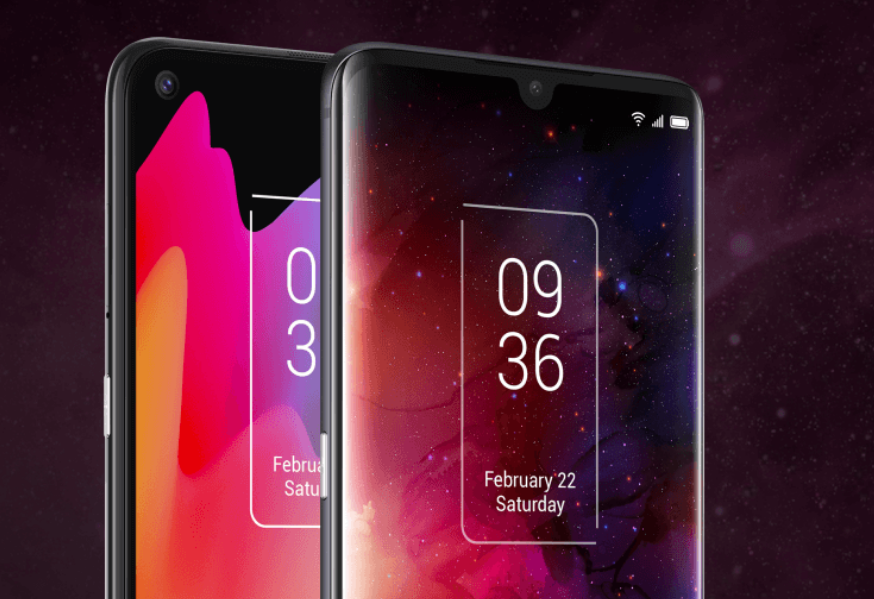Why You Don't Need To Spend $500 To Get A Great Android Phone
High-end smartphones no longer need to break the bank.

The release of a new smartphone used to be an exciting affair. We used to buzz about the possibilities, wonder about what new features a manufacturer would bring to the world. Sadly, times have changed.
Modern flagship phones are growing increasingly 'samey,' with new features increasingly becoming gimmicks rather than useful design choices.
This is understandable, on some level - look at the cadence with which new devices are being released. To call it exhausting would honestly be something of an understatement. We cannot even go a single year without one of the Android space's heavy-hitters introducing the latest and greatest addition to its portfolio.

Originally, these annual releases were fairly compelling. We saw exponential leaps in processing power and hardware quality coupled with a ton of creative, useful new features and designs. Lately, though?
The flagship space shows every sign of slowing down, as consumers are now more fatigued than ever where high-end and high-priced phones are concerned.
All the while, the gulf between flagships and mid-range devices is growing ever narrower. Today, there's less justification for dropping an arm and a leg on a flagship Android than ever before. Because the simple truth is, smartphone technology as a whole is now better than ever, and you no longer need to spend $500 or more to get a great Android phone.
We're going to explore a few of the reasons this has occurred, and what they may mean for you.
The emergence of flagship fatigue

At some point, it was decided that a new flagship device should be released either every year or every other year at minimum. At that point in time, such a rapid release cycle was at least somewhat understandable. Moore's Law - which, in layman's terms, holds that circuit and processor capabilities double roughly every two years - was still highly relevant.
Cracks are beginning to show in the theory. We've reached a point where smartphone technology is no longer developing at the sort of breakneck speed that justifies annual releases. And on some level, we all know it.
Not only is the performance gap between new phones becoming increasingly smaller, but people now also tend to hold onto their phones for longer, as well. According to research firm Strategy Analytics, for instance, people now wait an average of 33 months before upgrading or replacing their phones. They simply don't see the need to rush out and pick up a shiny new flagship every year.
Even major OEMs are aware of this - it's why most of the leading Android manufacturers now offer mid-range devices as part of their portfolio.
Consider, for instance, the upcoming TCL 10 Pro, announced in April 2020. Retailing at only $450, it's got the hardware, functionality, and feature-set you'd expect to see on a phone that costs twice that. Business Insider even noted that it offers many features that flagships like the iPhone 11 completely lack, including 5G.
The problem with "premium"

The flagship market has, for the past several years, been...well, flagging. As noted in a 2018 article published by Computer World, low and mid-range smartphones are rapidly improving. They're getting better specs and they're being armed with premium features. As for flagships?
The only thing that's really evolving in that space lately is the price. While flagship phones do arguably offer better features than other, less expensive models, the massive price gulf simply isn't enough to justify it for most users. As reported by Business Insider, they're simply too expensive.
And perhaps as a result of the aforementioned flagship fatigue, they've also become more than a little boring, as well. If you were to put every flagship Android device released in the past two years side by side with one another, you might notice something a little curious.
While each may have a few minor distinguishing features, there's ultimately no real variety in design. In their effort to compete against one another, major OEMs have imbued their devices with a sort of 'sameness,' something that certainly isn't helped by the downright unreasonable release schedule for new devices.
If you're dropping upwards of $1000 on a smartphone, it should feasibly outperform lower-end models on every level. This simply isn't the case. If you're buying a flagship, you're usually not just paying for quality.
You're also buying into the brand. It's your call whether or not that's worth it to you. Ultimately, though, you're better off saving your money and going with a manufacturer like TCL.
Better components, higher quality

The choice between a flagship and a mid-range device is no longer a choice between premium quality and standard quality - there are even some midrange devices that outshine their high-end competition.
Thanks to developments in hardware and manufacturing, mid-range manufacturers such as TCL now have access to higher-quality components than ever before. From better processors to more advanced displays, many mid-range phones are now on even footing with high-end devices from just a few years ago as high-end components are more readily available to the mid-tier market.
This means mid-range smartphones are able to offer features that, until recently, were the domain of flagships, such as 5G LTE and 4K video. The only area in which they're feasibly lagging far behind is in the camera department. Even then, unless you're a professional photographer, you're not likely to notice any huge differences.
It's important to note that this ever-shrinking gulf between the high, mid, and low-end of the market is hardly unique to the smartphone space. We're also witnessing it in multiple other industries, such as television. Take TCL, for example - while many smart televisions tend to cost an arm and a leg, it manufactures a line of television models that offer comparable quality at a significantly lower price.
In short, you no longer have to sacrifice power or build quality in order to save money.
Great doesn't have to mean expensive

In the early days of the smartphone industry, you had to pay a premium price to get your hands on a premium device. Flash-forward to 2020, and that's no longer the case. While flagship phones certainly offer some advantages over less-expensive models, the gap between the two is smaller than it's ever been.
Get all the latest news, reviews, deals and buying guides on gorgeous tech, home and active products from the T3 experts

For 25 years T3 has been the place to go when you need a gadget. From the incredibly useful, to the flat out beautiful T3 has covered it all. We're here to make your life better by bringing you the latest news, reviewing the products you want to buy and hunting for the best deals. You can follow us on Twitter, Facebook and Instagram. We also have a monthly magazine which you can buy in newsagents or subscribe to online – print and digital versions available.
-
 The Night Manager S2 gets a sizzling trailer, with dates confirmed for this thriller's return
The Night Manager S2 gets a sizzling trailer, with dates confirmed for this thriller's returnReturning John La Carré series gets an official trailer - and will be free for some viewers
-
 I've tested the Pixel Buds 2a and there's one thing I miss from the Buds Pro
I've tested the Pixel Buds 2a and there's one thing I miss from the Buds ProSave cash with Pixel Buds 2a if you're happy to forego this feature
